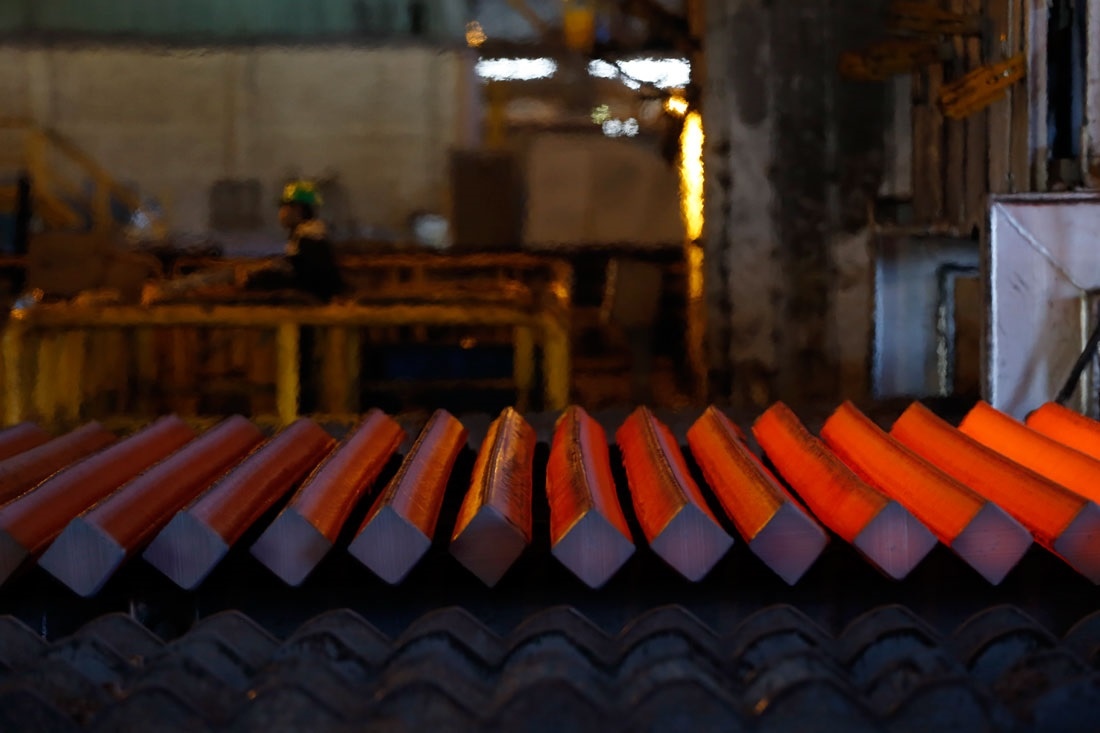Iran’s direct net steel exports reached its highest in 10 years as it hit 971,000 tons in 2016 and bested all other countries in the Middle East and North Africa region, World Steel Association’s latest report announced.
The Iranian steel industry has truly come a long way. In 2007, Iran was MENA’s largest importer of steel and its net exports stood at -11.6 million tons. The figure stood at -674,000 tons in 2015.
Save for 2016, Iran has been in negative territory since 2006, although it followed a steadily upward trend.
The Islamic Republic has zoomed past big names in the region, including Turkey. Iran’s archrival posted a net export of -1.66 million tons in 2016, showing a negative trend starting a year earlier. This is while Turkey’s steel trade balance was mostly above 5 million tons in the 10-year period.
The net exports of Saudi Arabia and the UAE 2016 stood at -7.1 million tons and -4.08 respectively. Their track record for the decade shows a constant presence in the negative territory.
As for the global record, Iran ranked 12th in direct net exports in 2016, standing between the Netherlands (11th) with 1.88 million tons and Finland (13th) with 871,000 tons.
China ranked first with 94.48 million tons, followed by Japan with 34.49 million tons, Kazakhstan with 26.7 million tons, Ukraine with 17.09 million tons, Brazil with 11.53 million tons, South Korea with 7.3 million tons, Belgium and Luxembourg with 5.4 million tons, Taiwan with 4.3 million tons, Austria with 2.98 million tons and Slovakia with 2.14 million tons.
Iran was also the world’s 17th largest direct exporter of steel with 5.65 million tons. It was sandwiched between Canada with 5.8 million tons and the Czech Republic with 5.19 million tons.
China was the world’s largest with 108 million tons, followed by Japan with 40.5 million tons, South Korea with 30.5 million tons, Germany with 25 million tons, Belgium and Luxembourg with 19.6 million tons, Ukraine with 18.2 million tons, Italy with 17.8 million tons, Turkey with 15.3 million tons, France with 13.9 million tons, Brazil with 13.3 million tons, Taiwan with 12.2 million tons, India with 10.3 million tons, the Netherlands with 10.2 million tons, Spain with 9.3 million tons and the US with 9.2 million tons.
The WSA report presents a cross-section of steel industry statistics. It contains comprehensive statistics from 2006 to 2016 on crude steel production by country and process, steel production by production, steel trade by product, apparent steel use and apparent steel use per capita by country, as well as production and trade of pig iron and direct-reduced iron.
It also includes data on production, as well as trade of iron ore and scrap. The statistics were collected from members of WSA and various international organizations.
World steel members represent approximately 85% of the world's steel production, including over 160 steel producers with nine of the 10 largest steel companies, national and regional steel industry associations and steel research institutes.
Iran produced 17.89 million tons of crude steel in 2016, registering a 10.8% growth compared to the preceding year.
Crude steel is defined as steel in its first solid (or usable) form: ingots, semi-finished products (billets, blooms, slabs), and liquid steel for castings. This is not to be confused with liquid steel, which is steel poured.
> Apparent and True Steel Use
The rising tide in Iran’s steel exports can partly be explained by taking the recent diminishing apparent steel usage in the country into account.
Iran’s construction sector has long been dormant, as government budget for development projects keeps falling every year.
Iranian steel-using industries, such as auto producers and pipe-makers, have yet to account for a sizable share of Iran’s increasing steel output. Lackluster demand is consequently the dominant market narrative.
Apparent steel usage is utilized by WSA as a method for measuring steel demand, which is expressed in volume terms as deliveries minus net exports of steel industry goods. ASU is usually calculated for finished steel use.
Iran’s ASU has had a rocky record in the last decade. Starting at 13.7 million tons in 2006, it jumped to 18.3 million the next year, only to sink again to 15.04 in 2009. It grew steadily over the next two years to 21.12, but slid to 18.9 for 2012. For the 2013-16 period, the figure fluctuated between 19.7 and 19.1 million.
ASU per capita also follows the same pattern, ending 2016 at 238 kilograms.
Another method for measuring steel demand is true steel use, obtained by deducting net indirect exports of steel from ASU. This method takes into consideration the trade in steel embedded in cars, ships, machines, etc. The concept of indirect trade is important because it allows us to measure ‘true’ steel demand of a country: the amount of steel required to meet the country’s daily needs.
Iran’s 10-year TSU has relatively followed the same pattern as ASU, while standing higher for every year.
TSU ended 2006 at 14.92 million tons, recorded its highest in 2011 with 22.95 million tons and closed 2016 at 20.7 million tons.
Iran’s ASU and TSU per capita also paint a similar picture. They stood at 238 and 259 kilograms respectively, with Iran’s global ranking reaching 26th and 31st.


